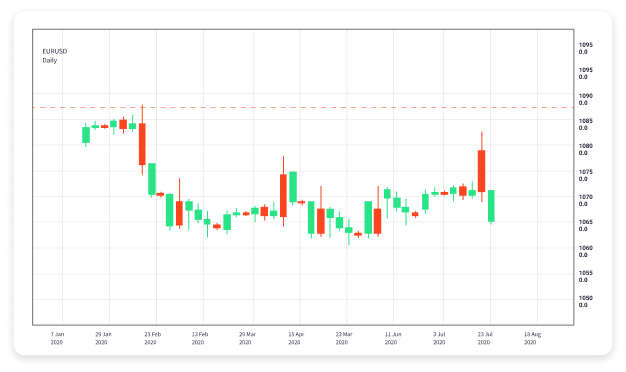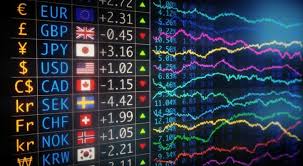
Forex trading, or foreign exchange trading, is the act of buying and selling currencies on the foreign exchange market with the aim of making a profit. Known for its high liquidity and 24-hour operation, Forex trading attracts millions of traders globally. Whether you’re a novice or an experienced trader, understanding the dynamics involved in Forex trading is crucial for success in this volatile market. In this guide, we will delve into various aspects of Forex trading, including strategies, tips, and tools you can use to enhance your trading experience. One vital resource to consider is trading forex Trading Broker ID, which can help you select a trustworthy broker.
Understanding the Forex Market
The Forex market is the largest financial market in the world, with a daily trading volume exceeding $6 trillion. In contrast to stock markets, which operate through centralized exchanges, the Forex market operates over-the-counter (OTC), meaning that trades occur directly between parties, typically facilitated by brokers. This decentralized structure provides a unique environment where traders can operate from anywhere in the world, as long as they have an internet connection.
Currency Pairs
In Forex trading, currencies are traded in pairs. Each currency pair consists of a base currency and a quote currency. For example, in the currency pair EUR/USD, the Euro (EUR) is the base currency and the US Dollar (USD) is the quote currency. The price of the currency pair indicates how much of the quote currency is needed to purchase one unit of the base currency.
Major Currency Pairs
There are three main categories of currency pairs: major, minor, and exotic. Major currency pairs are the most traded and include the following:
- EUR/USD – Euro/US Dollar
- USD/JPY – US Dollar/Japanese Yen
- GBP/USD – British Pound/US Dollar
- USD/CHF – US Dollar/Swiss Franc
- AUD/USD – Australian Dollar/US Dollar
Key Players in the Forex Market
The Forex market comprises various participants, each playing a distinct role in the market’s dynamics. The key players include:
- Central Banks: Institutions that manage a country’s currency, money supply, and interest rates. They intervene in the Forex market to stabilize or adjust their national currency.
- Commercial Banks: Major players in the Forex market, facilitating transactions, trading for their accounts, and serving their clients.
- Hedge Funds: Investment funds that employ various strategies to earn high returns, often involving currency trading.
- Retail Traders: Individual traders who participate in Forex trading through online platforms, often using leverage to maximize their trading positions.

Forex Trading Strategies
Implementing effective trading strategies is crucial for success in Forex trading. Here are a few popular strategies:
1. Scalping
Scalping involves making numerous trades throughout the day to capture small price movements. This strategy requires quick decision-making and execution, as positions are typically held for a very short time.
2. Day Trading
Day trading consists of opening and closing trades within the same trading day. Traders who use this strategy avoid overnight positions to minimize risks associated with market fluctuations that occur when the market is closed.
3. Swing Trading
Swing trading focuses on capturing price swings over several days or weeks. Traders analyze price charts to identify patterns and enter trades accordingly, leveraging the potential for larger price movement.
4. Position Trading
This longer-term strategy involves holding positions for weeks, months, or even years. Position traders typically analyze fundamental factors and macroeconomic indicators to determine long-term trends.
Risk Management in Forex Trading
Effective risk management is essential in Forex trading as it helps protect your capital from significant losses. Here are some key risk management strategies:
1. Set a Stop-Loss Order
A stop-loss order is a predetermined price level at which you will exit a losing trade. This tool helps limit your losses and prevents emotional decision-making during trading.
2. Use Proper Position Sizing
Position sizing involves determining how much of your capital to allocate to a particular trade based on your risk tolerance. A common rule is to risk no more than 1% of your trading capital on a single trade.
3. Diversify Your Portfolio
Diversification involves spreading your investments across various pairs and strategies to minimize risk. By not putting all your capital into a single trade, you can reduce the impact of a potential loss.
Tools and Resources for Forex Trading
Utilizing the right tools can enhance your trading experience significantly. Here are some essential tools used by Forex traders:
1. Trading Platforms
Trading platforms are software applications that allow you to execute trades, analyze charts, and monitor your positions. Popular platforms include MetaTrader 4 (MT4), MetaTrader 5 (MT5), and TradingView.
2. Economic Calendars
An economic calendar provides traders with information about upcoming economic events and indicators that may impact currency prices. Staying informed about these events can help you anticipate market movements.
3. Technical Analysis Tools
Technical analysis tools, including indicators and chart patterns, help traders analyze historical price movements and make informed decisions. Some popular indicators include Moving Averages, Relative Strength Index (RSI), and Bollinger Bands.
Conclusion
Forex trading can be both exciting and profitable if approached with the right strategies and risk management techniques. It is crucial to stay informed, continuously educate yourself, and utilize available tools to enhance your trading. By understanding the market structure, employing effective strategies, and managing risk, you can become a successful Forex trader. Whether you are just starting or looking to refine your skills, always remember the importance of patience, practice, and perseverance in the trading journey.
